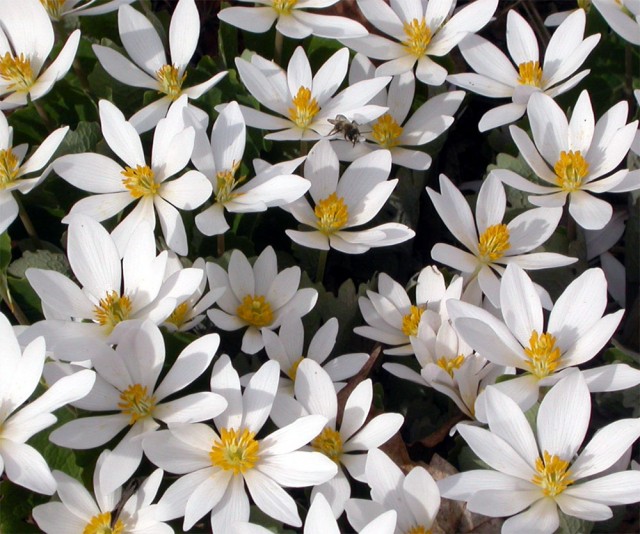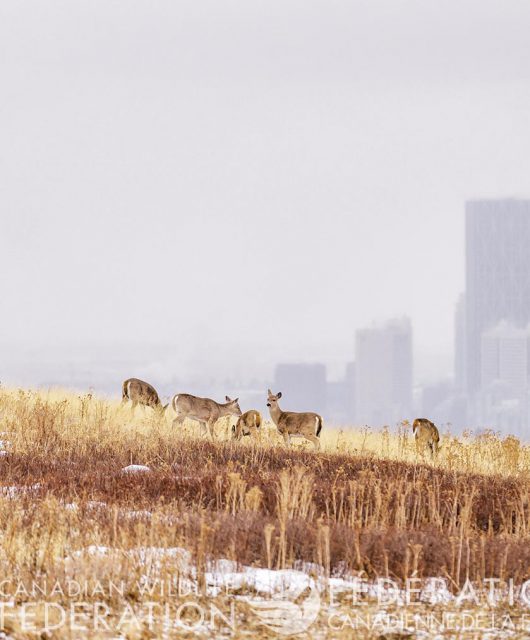
Let’s celebrate the bloodroot on day six of Canada Blooms!
Spring ephemerals are flowers that make the most of the light that shines down through the open canopy in early spring. It is at this time that they bloom and reproduce. Then they quiet down by late spring when the leaves are fully sprouted on the trees overhead.
One impressive spring ephemeral is bloodroot (Sanguinaria canadensis). This member of the poppy family has a short blooming period, but it puts on a good show to make up for that. It also has large green leaves that persist through the summer, serving as a useful ground cover. Bloodroot’s natural habitat is in or at the edge of rich, moist woods from southeast Manitoba through to Nova Scotia.
Native bees and flies may pollinate bloodroot flowers — and get pollen in return — provided the early spring weather is warm enough for them to be active. If not, the flower is able to self-pollinate, with its anthers (male part) reaching down to deposit pollen in the stigma (female part).
Certain native ants have a win-win relationship with bloodroot. They carry the bloodroot seeds to their homes and eat the seeds’ nutritious outer layer. The bloodroot seeds are still viable after the ant feast and are protected in a chamber within the ant nest. This chamber, along with the ants’ refuse of organic matter, provides a fertile place for the seeds to germinate. While bloodroot does spread by its rhizomes, the additional boost from ants serves to speed up the process, helping bloodroot populations to expand at a time when destruction of its habitat is rampant.
Learn more about how to grow this lovely bloom here!
[PHOTO]


